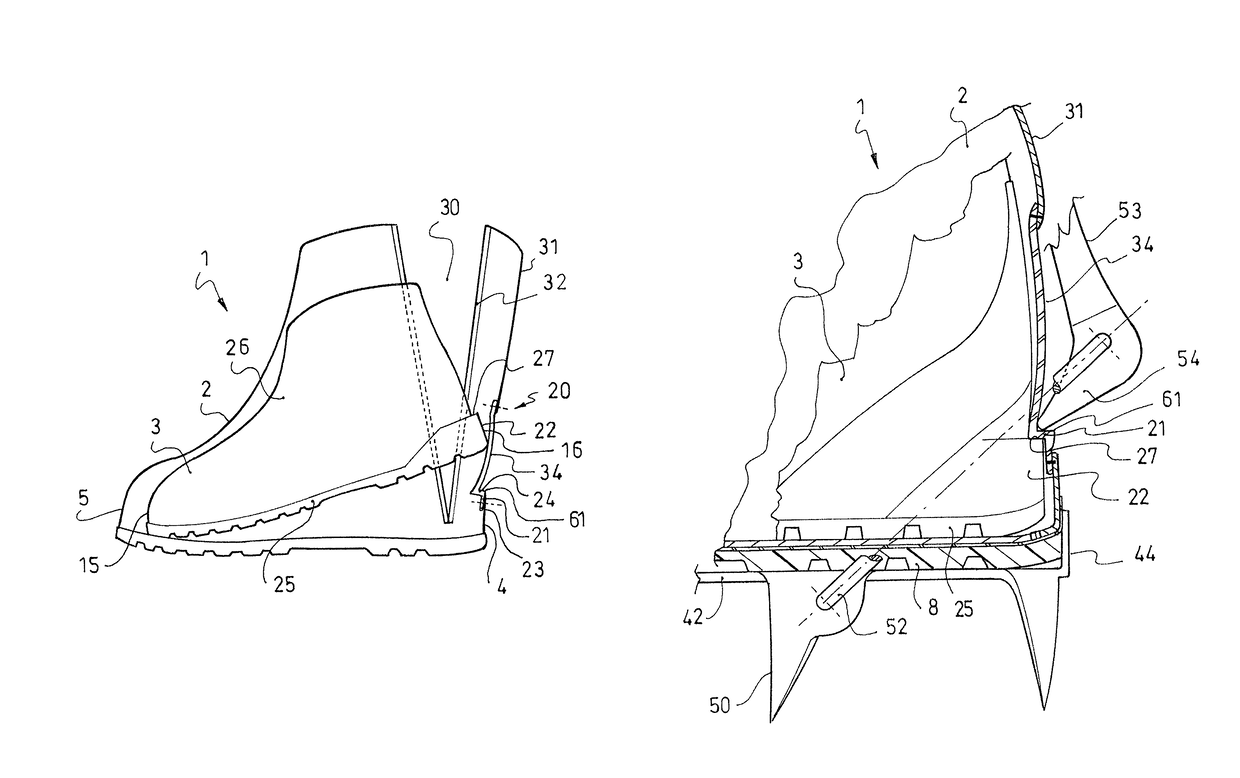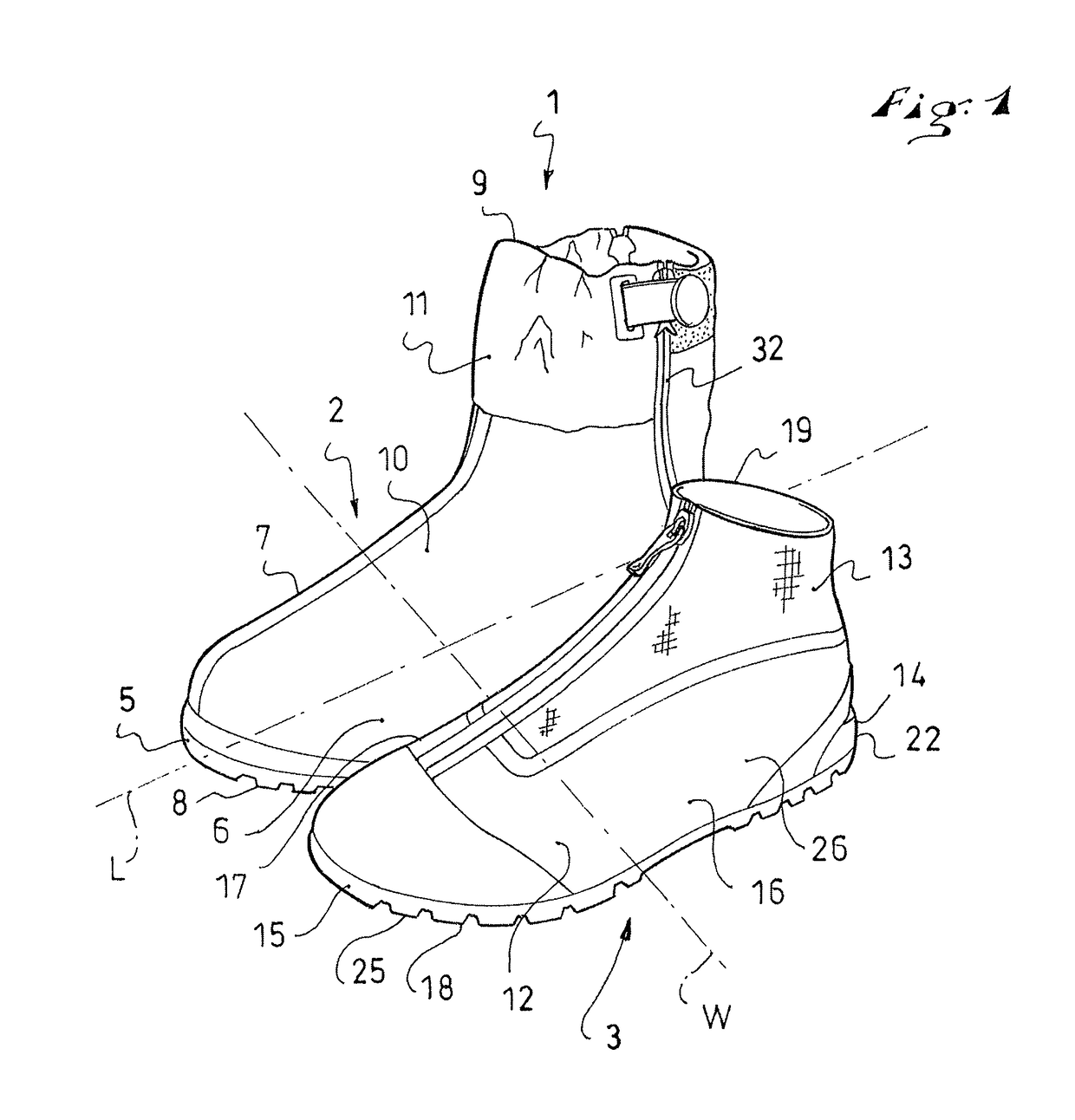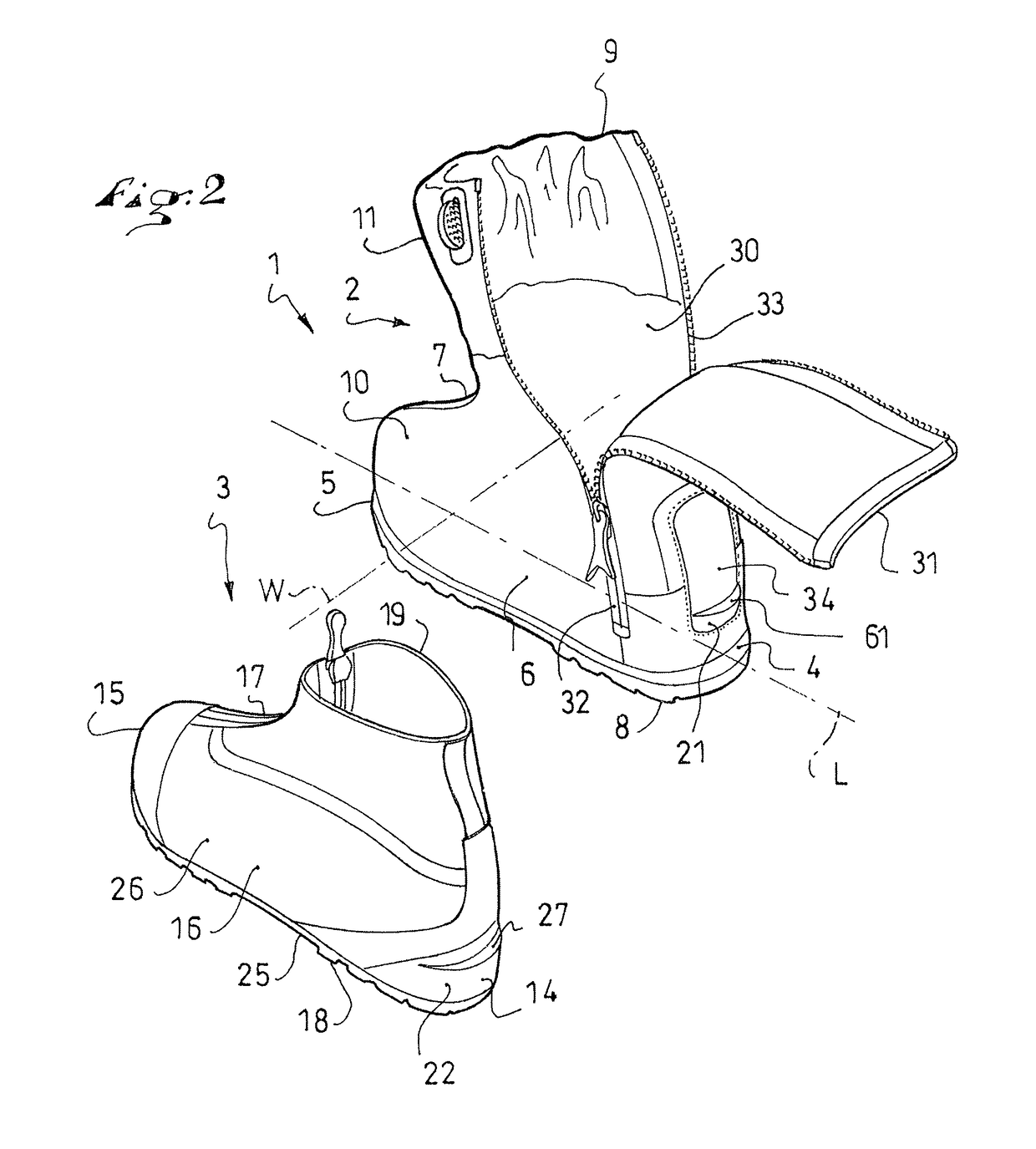Boot having a first footwear element and a second footwear element
a technology of footwear element and shoe, applied in the field of shoes, can solve the problems of insufficient comfort, incomplete transmission of impulses and sensory information, negative affect on comfort and accuracy, etc., and achieve the effect of optimizing comfort in the boot and reducing or even eliminating unwanted movements
- Summary
- Abstract
- Description
- Claims
- Application Information
AI Technical Summary
Benefits of technology
Problems solved by technology
Method used
Image
Examples
first embodiment
[0030]The first embodiment described below relates, for example, to a walking boot or a mountain boot, for traveling on flat ground or mountainous terrain. However, the invention applies to other fields, such as those mentioned above.
[0031]The first embodiment is described with reference to FIGS. 1 to 7.
[0032]As shown in particular in FIGS. 1 and 2, a walking boot 1 is configured to receive the wearer's foot. In a known manner, the boot 1 includes a first footwear element 2 and a second footwear element 3, the second footwear element 3 being constructed to be inserted into the first footwear element. The first footwear element 2 is an outer element, directly exposed to possible contact with obstacles and can sometimes be splashed with water, snow, or ice. By corollary, the second footwear element 3 is an inner element, adapted to be removably inserted into the first footwear element. This means that the user can selectively position the second footwear element 3 in the first footwea...
third embodiment
[0055]The third embodiment, according to FIG. 9, includes a boot 1 with, in particular, the first footwear element 2. This boot is specific in that the first footwear element 2 has a front opening 67 closed by any suitable means, such as a slide fastener 68, such as a zipper, the front opening 67 being a slit, for example.
[0056]In any case, the invention is made from materials and using techniques of implementation known to one of ordinary skill in the art.
[0057]The invention is not limited to the particular embodiments described above, and includes all technical equivalents that fall within the scope of the claims that follow.
[0058]In particular, other structures may be provided to make the stops 21, 61, and the guide 34.
[0059]Any upper or sole assembly structure may be provided for each of the footwear elements 2, 3, with devices for tightening the upper, if necessary.
PUM
 Login to View More
Login to View More Abstract
Description
Claims
Application Information
 Login to View More
Login to View More - R&D
- Intellectual Property
- Life Sciences
- Materials
- Tech Scout
- Unparalleled Data Quality
- Higher Quality Content
- 60% Fewer Hallucinations
Browse by: Latest US Patents, China's latest patents, Technical Efficacy Thesaurus, Application Domain, Technology Topic, Popular Technical Reports.
© 2025 PatSnap. All rights reserved.Legal|Privacy policy|Modern Slavery Act Transparency Statement|Sitemap|About US| Contact US: help@patsnap.com



